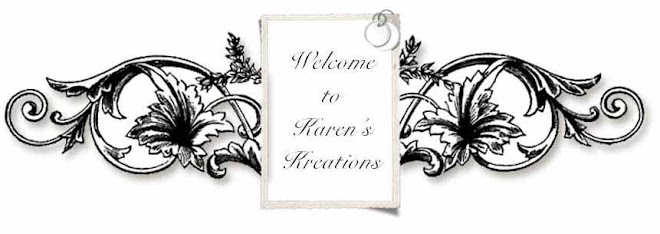Welcome to Rubbernecker Stamps PREVIEW days!! Today is DAY ONE!! Rubbernecker will be releasing NEW STAMPS on Tuesday 5/17/11. You will want to visit EVERY one of the TALENTED design team participants, for on ONE of their blogs, is a chance to win a $15 Rubbernecker Stamps gift certificate! You can find the complete list of today’s participants on the
RUBBENECKER BLOG! Hope to see you on RELEASE day; we have a FUN game planned for everyone!! Thanks for stopping by, enjoy all of the creations, and GOOD LUCK!!
This card features the new set Poppies 3. Whenever I see poppies like these, it reminds me of the olden days when I was a little girl. When stopping for red lights while driving around town, men would come by our car selling these poppies to help support our veterans. To check my memory, I did a google search and found more information which I have put at the end of the post.

I stamped the image and sentiment onto white card stock using Tuxedo Black Memento ink. It is colored with Copic markers. The bottom right corner is punched with a Martha Stewart Swirling Lace corner punch. I adhered a piece of red gingham ribbon around the card, used another length of ribbon to tie a bow and added a button before gluing it to the ribbon. The white panel is matted onto the black card front. I added black brads to the centers of the flowers. This sentiment even fits our great veterans, don't you think?
Thanks for stopping by! Now go hug a veteran!
Q. Why are red poppies worn on Veterans Day, and where can I obtain them?
A. The wearing of poppies in honor of America's war dead is traditionally done on Memorial Day, not Veterans Day. The practice of wearing of poppies takes its origin from the poem In Flanders Fields, written in 1915 by John McCrae.
In Flanders Fields
In Flanders fields the poppies blow
Between the crosses, row on row,
That mark our place; and in the sky
The larks, still bravely singing, fly.
Scarce heard amid the guns below.
We are the dead. Short days ago
We lived, felt dawn, saw sunset glow,
Loved, and were loved, and now we lie
In Flanders fields.
Take up our quarrel with the foe:
To you from failing hands we throw
The torch; be yours to hold it high.
If ye break faith with us who die
We shall not sleep, though poppies grow
In Flanders fields.
This was the poem written by World War I Colonel John McCrae, a surgeon with Canada's First Brigade Artillery. It expressed McCrae's grief over the "row on row" of graves of soldiers who had died on Flanders' battlefields, located in a region of western Belgium and northern France. The poem presented a striking image of the bright red flowers blooming among the rows of white crosses and became a rallying cry to all who fought in the First World War. The first printed version of it reportedly was in December 1915, in the British magazine Punch.
McCrae's poem had a huge impact on two women, Anna E. Guerin of France and Georgia native Moina Michael. Both worked hard to initiate the sale of artificial poppies to help orphans and others left destitute by the war. By 1920, when Guerin, with the help of the American Legion, established the first poppy sale in the U.S., the flower was well known in the allied countries — America, Britain, France, Canada, Australia and New Zealand — as the "Flower of Remembrance." Proceeds from that first sale went to the American and French Children's League.
Guerin had troubles with the distribution of the poppies in early 1922 and sought out Michael for help. Michael had started a smaller-scaled Poppy Day during a YMCA conference she was attending in New York and wanted to use the poppies as a symbol of remembrance of the war. Guerin, called the "Poppy Lady of France" in her homeland, and Michael, later dubbed "The Poppy Princess" by the Georgia legislature, went to the Veterans of Foreign Wars (VFW) for help.
The poppy was adopted as the official memorial flower of the VFW at its national convention in Seattle, Wash., in August 1922, following the first nationwide distribution of poppies ever conducted by any veterans organization.
In 1923, faced by a shortage of poppies from French manufacturers, the VFW relied on New York florists to make up the difference. This was a huge setback, however, and led to the idea by VFW officials to use unemployed and disabled veterans to produce the artificial flower. This concept was approved in late 1923 and the first poppy factory was built in Pittsburgh, Pa., in 1924. This provided a practical means of assistance to veterans and also ensured a steady, reliable source of poppies. Veterans at Department of Veterans Affairs medical facilities and veterans homes help assemble the poppies, and each year the VFW distributes roughly 14 million worldwide.
It was around the same time the first poppy factory was built that the VFW registered the name "Buddy Poppy" with the U.S. Patent Office. The term "Buddy" was coined by the poppy makers as a tribute to their comrades who did not come home from the war or who were scarred and crippled for life.
The VFW celebrated the 75th anniversary of the Buddy Poppy as its official flower in 1997. While profits from its sales have helped countless veterans and their widows, widowers and orphans over the years, the poppy itself survives as a perpetual tribute to those who have given their lives for the nation's freedom.

























